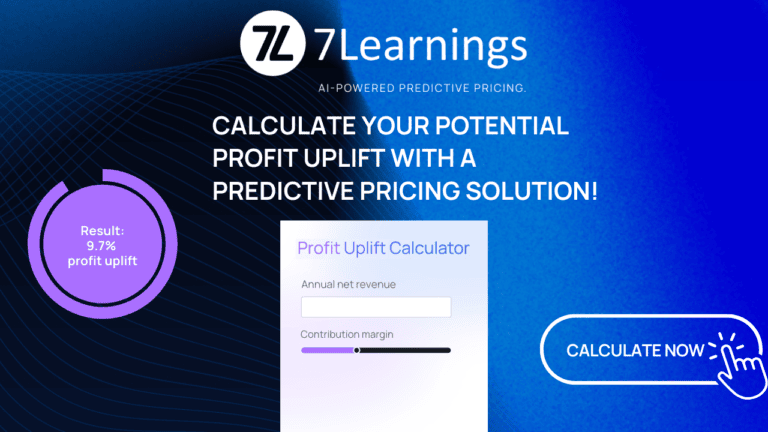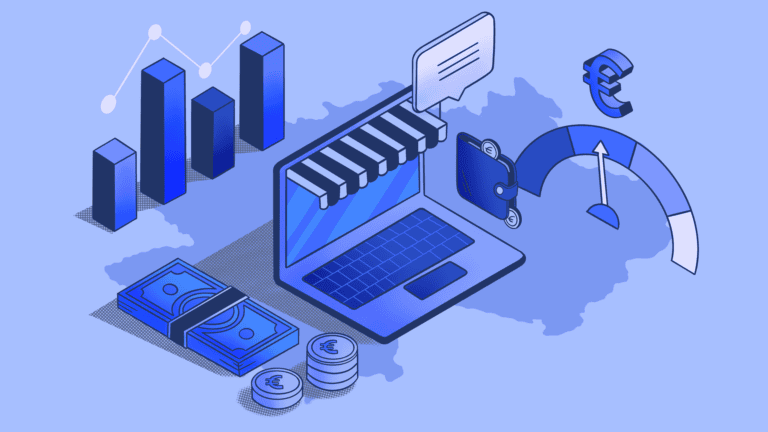Competitive pricing is a long-established strategy to enhance market share and attract more customers. However, retailers can easily fall into the trap of limited profits by always undercutting competitor prices on a product-by-product basis. The good news: New technologies enable a more holistic approach to competitive pricing leading to improved customer experiences and a boost in revenue.
The pitfalls of product-by-product comparison
No question, pricing is one of, if not the most important purchasing factor: 87 % of online shoppers want to make a good deal when buying products, according to Google’s research. Low prices drive demand. Therefore, taking competitor prices as a baseline to select price points for your products is a logical choice, especially if you sell similar products to other retailers. In addition, it’s a strategy that doesn’t need lots of technical support and can be done quickly and manually.
However, the downsides to these competitor-matching strategies outweigh the benefits: If you only look to competitors for optimal prices, you miss the features and benefits of your own products that might allow for higher prices without losing sales. Also, by matching or undercutting competitor prices, you unnecessarily limit your revenue which in return limits your resources for product development and innovation.
The crucial influence of price elasticity
Price elasticity indicates how much price increases or decreases influence demand and sales. When retailers price their products based on their competition without relying on specific price elasticity data, they most likely won’t hit the perfect spot that balances demand and prices in a way that maximizes their revenue. Thus, they will lose potential profit with every sale.
Price elasticity varies for different products and in different market segments. Some goods will always be in high demand and sales will be relatively constant despite slight or significant price increases, for example utilities like water, gas and electricities. Other products like luxury fashion and cars will be more sensitive to price changes. Specific price optimization software can analyze price elasticity on a product or category basis and enhance competitive pricing, helping retailers price their products for higher profits.
Moving beyond price reduction
Incorporating price elasticity in the competitive pricing strategy will enhance results, even more so if retailers optimize their offerings to justify higher prices. There are lots of different ways to do so depending on the market and product.
- Differentiation: By clearly distinguishing your product from competitors through unique features or superior quality, you can up prices with less decrease in sales. Customers will perceive your product as unique which makes them willing to pay a premium price.
- Value: Use value-based pricing instead of looking at competitors: Find out how much of a difference your product makes in peoples‘ lives, for example via customer research. How useful is a product, how much joy does it spark? Let the answers be reflected in your prices.
- Customer Experience: Optimize the overall experience customers have with your brand and shop. There are lots of tools to use, i.e. UX optimization of your online shop, availability of customer support, delivery times and discount campaigns.
Leveraging predictive approaches
Another challenge in pricing lies in the fact that price elasticity is not static but changes based on various factors over time. If you want to enhance your price optimization and set prices for maximum profits, you need to predict as accurately as possible how customers’ willingness to buy will be on a given day. That’s where predictive pricing technology comes in handy.
Algorithms based on artificial intelligence are able to analyze a vast amount of internal and external data of different kinds, i.e. data about your sales history, product details, seasonal factors, marketing activities, competitor activities and prices, and much more. This predictive pricing technology is able to find correlations undetectable for the human eye. By using current data those algorithms can calculate price elasticity in near real-time as soon as new data is received.
Achieving KPIs through predictive pricing
Predictive pricing solutions accurately predict price elasticity and can, with goal-driven steering, help retailers reach their key performance indicators faster.
7Learnings has incorporated this feature, allowing you to set a specific business goal, for example a certain percentage of growth in revenue, market share or margins in a specific time frame. Then, the algorithms will adjust prices for different products in a way that you will reach those goals without tedious manual interventions. You just set your goal and the predictive pricing solution works on autopilot – of course, you always have the option to intervene as you like.
Sounds too good to be true? Predictive is no magic pill and needs the right data foundation (quality and quantity) to function but it can lead to amazing results. With 7Learnings retailers usually see significant improvements after just a couple of weeks. Meinemarkenmode.de, for example, reached an uplift in profits of 10 %. INTERSPORT Krumholz, a prominent player in the German sports fashion industry, even achieved an increase in profits of 118 %.
Key learnings
- Competitive pricing is a long-established pricing strategy that is pretty easy to implement but has significant downsides that limits retailers success.
- There are several ways to go beyond competitor prices and be able to set higher prices without losing sales. A crucial factor is knowing the price elasticity of each product.
- The newest generation of price optimization tools determines price elasticity on autopilot and optimizes prices for specific business goals in near real-time.
- AI-based algorithms enable a more holistic approach than competitive pricing: they take competitor data into account as one factor among many others and by doing so facilitate significant boosts in revenue in a matter of weeks.



